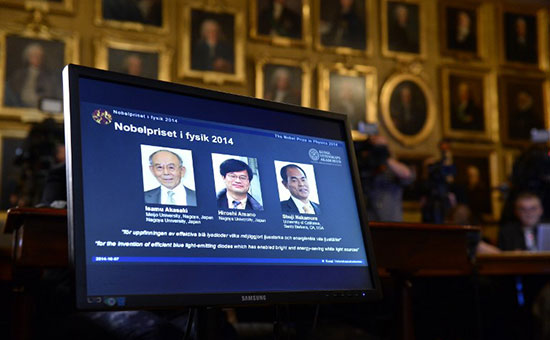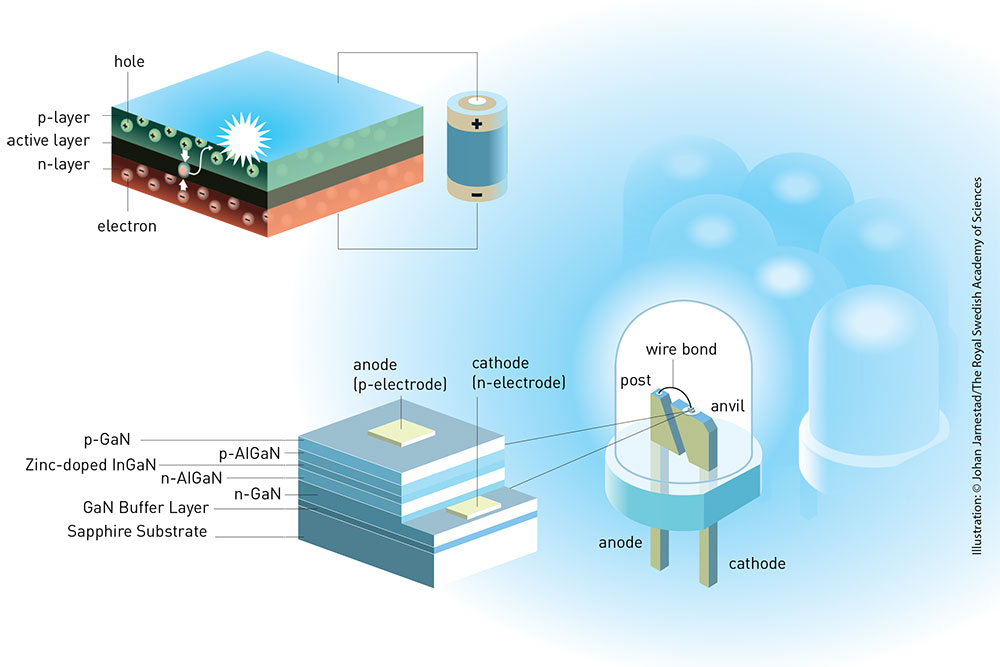
Photo: AFP
If last year was given the Nobel Prize for his fundamental theoretical research, this year the Swedish Academy of Sciences said the invention, having a very specific practical sense. Blue LEDs entered into commercial operation by the Japanese company Nichia Chemicals in the early 1990s, have proliferated. Development of blue LEDs in the company engaged Shuji Nakamura – now a professor at the University of California at Santa Barbara. In turn, Akasaki and Amano worked on his version of the blue LED at Nagoya University in Japan from the 1980s, and by 1992 were able to provide a diode that emits bright blue light.
The first light-emitting diodes (light sources based on the effect of the emission of semiconductors) were constructed as early as the middle of the XX century. They emit light ranging from infrared to green, however, scientists did not manage to establish a source of a semiconductor blue light. The blue LED was fundamentally important: in combination with green and red LEDs can help create a new, efficient and environmentally friendly source of white light.
Practical success of Japanese trio was the fact that they have created a cheap and high quality blue LED. In 60-70 years several laboratories in the United States, Europe and Japan have tried to develop an efficient blue LED based on gallium nitride crystals (GaN), but the production technology was too expensive. One of the leading researchers in this field was a native of the Soviet Union, Jacques Pankov, who in 1973 recognized that the technology of blue LEDs on gallium nitride is far from realization.
The principle of operation of the LED and the example device blue LED lamp

Photo: nobelprize.org
Japanese laureates also relied on gallium nitride, but before them nobody has been able to grow a crystal of sufficiently high quality. Amano Akasaki and used for this layer of aluminum nitride on a sapphire substrate – augment the GaN crystal on. Nakamura, who worked independently of Akasaki and Amano, found his own unique way: he grew the first layer of the crystal at a “low” temperature (500 degrees Celsius), and the subsequent layers – at a higher temperature.
In his work laureates “go against the accepted truths and not afraid to take risks”, themselves designed equipment and conducted thousands of experiments, said the Nobel committee. Their inventions have led to a revolution in lighting technology: LEDs are based on the all-new, more efficient, durable and cheap lighting. Without LED unimaginable and modern appliances, and smartphones. Laser based on a tiny blue LED is used in today’s Blu-ray discs, high-density data recording. In addition, in the future UV LEDs on gallium nitride can be used to purify water from bacteria and viruses.
No comments:
Post a Comment